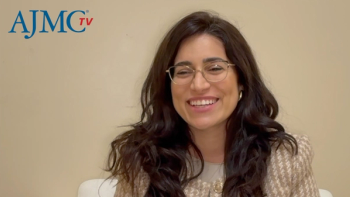
Bioethicists Propose Measures for Equitable Distribution of COVID-19 Vaccine
Nineteen bioethicists proposed a 3-phase plan for equitable distribution of a vaccine for coronavirus disease 2019 (COVID-19).
For months, bioethicists and policy officials have been discussing how to allocate limited supplies of any future vaccine for SARS-CoV-2, the virus that causes coronavirus disease 2019 (COVID-19).
There are 3 US phase 3 trials currently underway, and there are multiple candidates in trials
On Thursday, 19 global health experts proposed a 3-phase plan for vaccine distribution called the Fair Priority Model. The plan was published in the journal Science.
The paper took issue with previous proposals aimed at optimizing vaccine distribution. One, from the World Health Organization (WHO), has suggested that countries receive doses proportional to their populations. In the first phase, 3% of each country’s population would receive vaccines, and allocation would continue until every country has vaccinated 20% of its population.
Another suggests that countries vaccinate according to the number of front-line health care workers, the proportion of population over age 65 years, and the number of people with comorbidities in the country. This appears closest to what has been proposed in the United States, which has broken ties with the WHO and is refusing to take part in global development efforts through the COVID-19 Vaccines Global Access Facility.
By contrast, the Fair Priority Model considers 3 types of harms caused by COVID-19 and 3 values that must be adhered to when considering the allocation of a scarce supply of vaccine.
The harms include death (especially premature death) and permanent organ damage; indirect health consequences, such as health care system strain and stress; and economic destruction.
The 3 values are:
- Benefiting people and limiting harm, directly by preventing death and indirectly by reducing fallout, such as closed schools
- Prioritizing the disadvantaged, which the authors call a fundamental value in ethics and global health
- Giving equal moral concern for all individuals, without discrimination
The authors propose calculating premature death by using the “standard expected years of life lost” metric (SEYLL). “SEYLL incorporates equal moral concern by valuing a life saved at a given age identically across countries, regardless of preexisting conditions or differences in national life expectancy,” the authors wrote. They also note that premature deaths are more frequent in low-income countries.
“The idea of distributing vaccines by population appears to be an equitable strategy,” Ezekiel J. Emanuel, MD, PhD, vice provost for Global Initiatives and chair of Medical Ethics and Health Policy in the Perelman School of Medicine at the University of Pennsylvania, said in a statement. “But the fact is that normally, we distribute things based on how severe there is suffering in a given place, and, in this case, we argue that the primary measure of suffering ought to be the number of premature deaths that a vaccine would prevent.”
In phase 2 of distribution, the authors say that any plans should use 2 metrics that capture overall economic improvement and the extent to which people would be spared from poverty.
And in phase 3, countries with higher transmission rates are initially prioritized, with all countries eventually receiving enough vaccines to halt transmission, which is estimated to require that 60% to 70% of the population be immune.
Newsletter
Stay ahead of policy, cost, and value—subscribe to AJMC for expert insights at the intersection of clinical care and health economics.









































